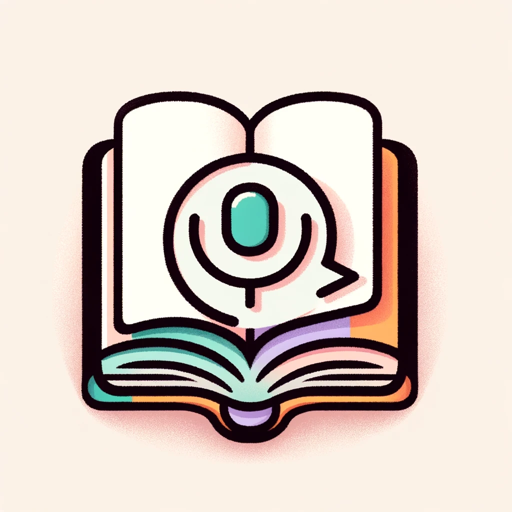Text To Speech-text to engaging speech
AI-powered voice for your words
Let's start giving meaning to your words.
Related Tools
Load More
ElevenLabs Text To Speech
Convert text into lifelike speech with ElevenLabs (limited to 1,500 characters)

AI Voice Generator
Say things with OpenAI text to speech.

AI Voice Generator: Text to Speech
Prompt to create high quality AI voiceovers.

Text To Speech 💬 TTS 11LABS
Convert text to speech with diverse voices & models. Easy to use for Youtube shorts, games,narration & more.

Read Aloud
A voice-assistant GPT reading aloud text from uploaded photos of book/document pages. (Insert page, click "Read Aloud" under the answer) Mobile: after inserting the page turn on the voice conversation from headphones emblem

VoiceOver
Convert text into natural-sounding speech.
20.0 / 5 (200 votes)
Detailed Introduction to Text To Speech
Text To Speech (TTS) technology is designed to convert written text into spoken words. The core function of TTS is to interpret text data and generate a corresponding audio output that mimics natural human speech. This technology is particularly useful for various applications where reading text aloud is necessary. TTS systems are built using advanced algorithms that can process text, understand context, and produce speech with appropriate intonation and pronunciation. For instance, a TTS system can read out loud a chapter from a book, making it accessible to visually impaired users. Another example is in customer service, where TTS can read FAQs or other information to callers.

Main Functions of Text To Speech
Accessibility Enhancement
Example
A visually impaired person uses a screen reader to listen to written content.
Scenario
In a real-world scenario, a visually impaired student uses TTS to access educational materials, allowing them to listen to textbooks and articles, thus improving their learning experience.
Automated Customer Service
Example
A customer calls a service hotline and interacts with an automated TTS system for support.
Scenario
A bank uses TTS to provide account information and respond to common inquiries over the phone, reducing the need for human operators and speeding up service delivery.
Content Consumption
Example
A user listens to a blog post using a TTS application while commuting.
Scenario
During a daily commute, a professional can use a TTS app to listen to news articles, blog posts, or emails, making productive use of travel time and staying updated with the latest information.
Ideal Users of Text To Speech Services
Visually Impaired Individuals
This group benefits greatly from TTS as it allows them to access written content through auditory means. TTS provides these users with greater independence and access to information, which is essential for their daily activities, education, and professional work.
Busy Professionals
Professionals who need to consume large amounts of written content but have limited time can use TTS to listen to documents, emails, and articles while multitasking. This helps them stay informed and productive without being tied to a screen.

How to Use Text To Speech
Step 1
Visit aichatonline.org for a free trial without login, also no need for ChatGPT Plus.
Step 2
Upload or paste your text into the provided text box on the platform.
Step 3
Select your desired voice and language settings from the available options.
Step 4
Click on the 'Convert' button to process your text into speech.
Step 5
Listen to the generated speech, and download the audio file if needed.
Try other advanced and practical GPTs
Evolution Chamber
AI-powered OpenAPI schema generator.

GPT Action Builder
AI-powered OpenAPI schema creator.

Content Pillar Creator
AI-Powered Content Creation Made Easy

Cipher GPT
AI-powered secure message encryption and decryption.

Mr Nitpick
AI-Powered Precision for Every Line

DS検定模擬試験 - GPT
Master the DS exam with AI-driven practice.

UX/UI Design Assistant
AI-powered UX/UI design enhancement
Code: Nodejs nestjs javascript typescript express
AI-powered assistance for Node.js developers

AI Marketing Command Center
AI-Powered Marketing, Simplified.

Prompt Master GPT
AI-powered responses tailored to your needs.

OpenToWork
AI-driven resume and job match tool.

Note Nest
AI-powered note keeper and organizer.

- Academic Writing
- Business Presentation
- Church Sermon
- Love Letter
- Script Reading
Common Questions About Text To Speech
What types of text can I convert to speech?
You can convert various types of text including documents, emails, scripts, essays, and even notes for presentations.
Do I need any special software to use Text To Speech?
No, you only need access to the aichatonline.org website. There’s no need for additional software or plugins.
Can I choose different voices for the speech output?
Yes, you can choose from a variety of voices and languages to customize the speech output to your preferences.
Is there a limit to the length of text I can convert?
While there might be practical limits based on the platform's capacity, generally you can convert long texts, such as book chapters or long articles, without issues.
Can I use this tool for commercial purposes?
Yes, you can use Text To Speech for commercial purposes, including creating voiceovers for videos, presentations, and other media.